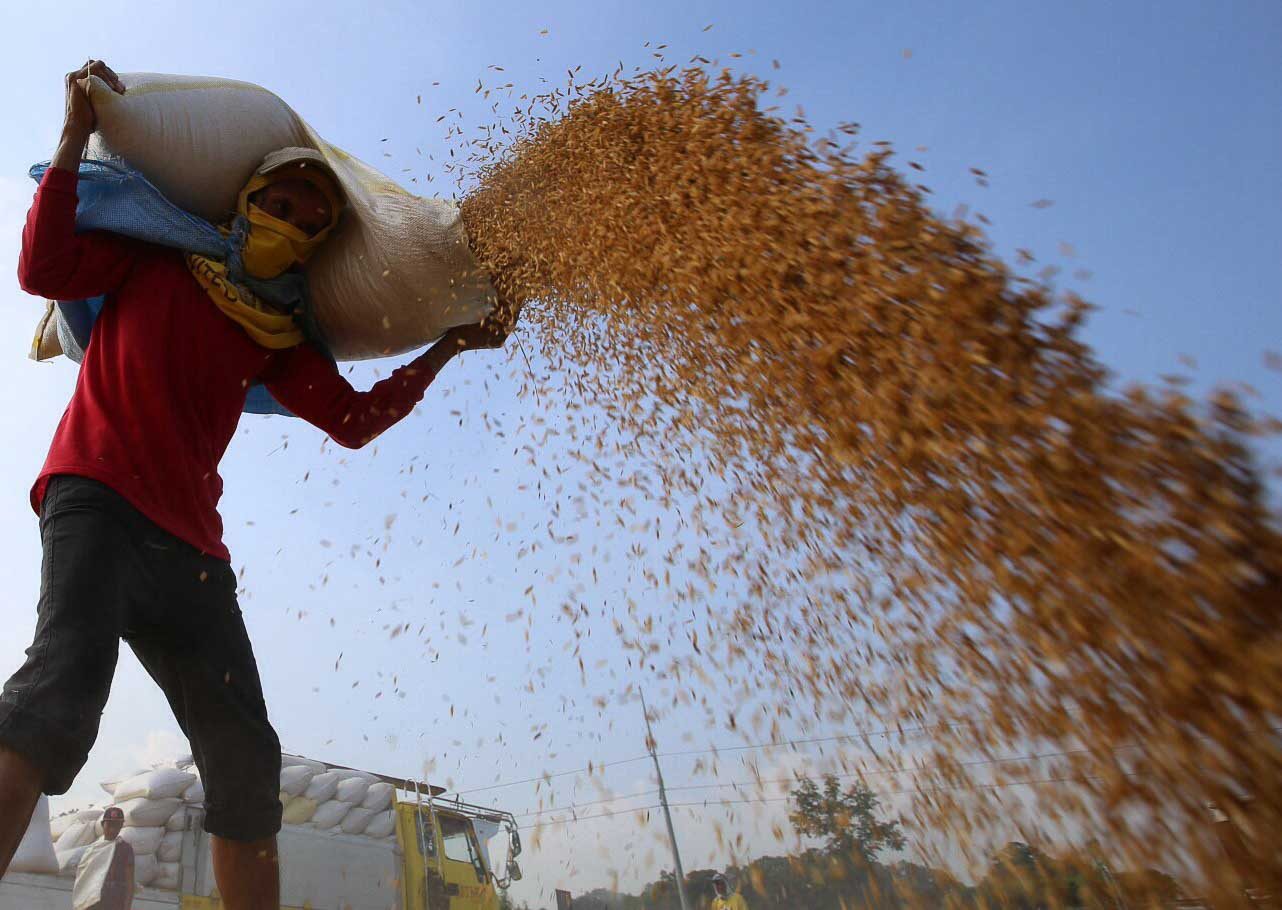SUMMARY
This is AI generated summarization, which may have errors. For context, always refer to the full article.

MANILA, Philippines – The government is set to compensate insured farmers affected by Typhoon Lando (international name Koppu) which ravaged major agricultural regions and wrought billions worth of damage to crops.
Some P732 million has been allocated by the Philippine Crop Insurance Corporation (PCIC) to compensate farmers insured under its program, according to a Department of Agriculture press statement on Friday, October 30.
The amount is based on a rapid assessment by the PCIC regional offices in 34 affected provinces. But it represents only 12% of the total cost of damage to the agricultural sector, which the DA pegged at P6.3 billion.
The assessment confirmed that some 95,000 hectares of insured farms owned or operated by 110,000 farmers were damaged. It is these farmers who will receive the compensation.
PCIC president Jovy Bernabe has instructed his staff to “assist affected farmers and speed up processing of damage claims in less than the 20-day regulation period.”
According to the PCIC report, most of affected insured farmers are from Regions I, II, and III.
The distribution of affected farmers is as follows:
| Region | No. of affected insured farmers |
| Region I | 40,226 |
| Region III | 32,715 |
| Region II | 10,568 |
Among insured farmers, those in the rice sector endured the greatest damage. P513 million worth of damaged crops came from more than 77,000 hectares being tilled by 89,786 farmers.
The second sector to suffer the most was the high-value commercial crops sector, with P116 million in damage affecting 17,793 farmers.
For corn, the damage was P1.6 million with 391 affected farmers.
The distribution of cost of damage by crop is as follows:
| Crop | Cost of damage | No. of affected farmers | Hectares |
| Rice | P513 million | 89,786 | 77,165 |
| High-value crops | P116 million | 17,793 | 16,863 |
| Corn | P1.6 million | 391 | 415 |
Among regions, Region III or Central Luzon reported the greatest cost of damage to insured farms at P385.7 million in estimated loss, followed by Region I or the Ilocos Region.
Distribution of the cost of damage in insured farms is as follows:
| Region | Cost of damage |
| Region III | P385.7 million |
| Region I | P124.4 million |
| Region IV-A | P81.1 million |
| Region II | P66.6 million |
| Region IV-B | P37.8 million |
| Cordillera Administrative Region | P14.6 million |
Expanding insurance coverage
Insurance for farmers in typhoon-beset Philippines is recognized by the government as a necessary form of climate adaptation.
Without insurance, smallholder farmers often have to start from scratch when their crops are destroyed by natural disasters. Most farmers in fact are buried deeper in debt, having had to borrow money to pay for seeds, fertilizers, and other inputs before the storm.
For this reason, Senator Cynthia Villar, chair of the Senate committee on agriculture, said she would draft a bill to expand the scope and coverage of crop insurance for Filipino farmers.
“Strengthening agricultural insurance as a risk-mitigating device will definitely complement other preventive measures,” she said in an October 22 press statement, days after Lando made landfall.
She lamented that the PCIC’s 2016 budget will only be covering 694,727 smallholder farmers and fisherfolk, out of the estimated 11 million agricultural workers in the country.
The proposed PCIC budget for 2016 amounts to P1.6 billion and will be used for insurance premiums to cover crop, livestock, fisheries or non-crop agricultural assets in times of natural calamity, pest outbreaks, or diseases.
But the PCIC said it has already increased the number of insured farmers to 917,814 as of end of 2014. This year, it hopes to increase this number to more than 1 million.
The PCIC is tasked to prioritize farmers and fisherfolk in disaster-prone areas and no-build zones identified by the geohazard maps of the Mines and Geosciences Bureau.
All beneficiaries must be registered under the Registry System for Basic Sectors in Agriculture. – Rappler.com
Add a comment
How does this make you feel?
There are no comments yet. Add your comment to start the conversation.